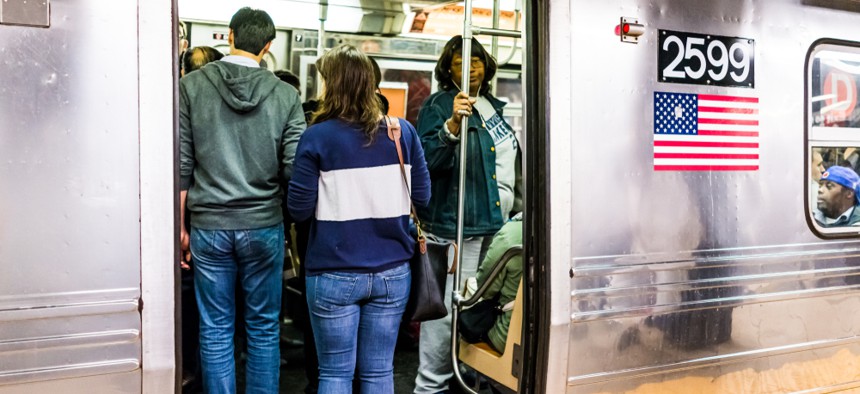Last fall, Gov. Andrew Cuomo pledged to address the twin crises of transit funding and traffic congestion: The New York City subway system in tatters, buses moving slower than anywhere else in the country and delivery vans curtailing routes because of traffic.
Now, as the state government begins to consider its budget for the coming year, the city’s transit riders will find out if the governor really meant it.
Two weeks ago, Cuomo’s Fix New York City panel laid out its recommendations to fund a subway modernization plan and unsnarl city traffic by implementing a congestion pricing plan for cars, trucks and ride-hailing vehicles entering Manhattan’s core. The proposal could raise more than $1 billion per year to fix public transit, while allowing cars and buses and delivery vans to move more easily around the city.
Almost immediately, attention shifted to state legislators, who began to weigh in on the proposal. Reporters observed that 10 years ago, when then-Mayor Michael Bloomberg proposed congestion pricing, the state Legislature didn’t enact it.
With the transit system in collapsing and traffic moving slower than ever, pundits are handicapping whether state legislators are sufficiently serious about the problem to pass a multibillion-dollar plan to address it. And legislators have a vital role to play: They must vote in favor of it.
But legions of New York City transit riders, stuck on broken trains and stationary buses, haven’t lost focus on the one person whose vaunted political skills will be needed to pass a legitimate plan: At the end of the day, our transit system remains #CuomosMTA.
Cuomo doesn’t only control the MTA through appointing six of the 14 voting members of the board, including its chairman. He also dominates the state budget process that could implement a fair and sustainable revenue source like congestion pricing to modernize the subways. The governor sets budget priorities in his executive budget. He holds more cards than anyone else at the negotiating table, and only he can engage in the complex bargaining and coalition building necessary to pass a credible plan to fix public transit.
Luckily, Cuomo has amply demonstrated that he can bring parties together to pass an ambitious plan when he makes it a priority. In 2011, he won passage of same-sex marriage – successfully corralling several wavering senators to support it. In 2013, he negotiated a major gun control law in response to the Sandy Hook Elementary School shooting. Since then, he has worked with legislators of both parties to raise the state’s minimum wage and pass paid family leave. In each case, the moment called for strong leadership, and Cuomo delivered.
Today, subway and bus riders are looking to the governor and asking, “Will be the hero we’ve been searching for?”
Cuomo has taken some vital steps toward fixing the transit system: He acknowledged the problem and accepted responsibility for addressing it. He appointed an experienced, respected leadership team at the MTA and produced a short-term stabilization plan to address the worst of the subway delays. He brought together some of the world’s leading experts on the Fix New York City panel, which produced a strong plan.
But Cuomo’s commitment to putting the plan into action remains unclear. The Fix New York City panel’s recommendations weren’t actually in the governor’s initial budget proposal. Instead, the budget included a series of distractions intended to reopen a fight with New York City Mayor Bill de Blasio over transit funding, such as suddenly requiring the city to pay for all major capital improvements to the subway system. The governor has talked up the idea of placing fees on ride-hailing vehicles. However, he has yet to apply his famed full-court press to win the more significant source of revenue: charging cars and trucks to drive in Manhattan’s central business district. It’s a distinction with a difference. We will need billions, not millions, if we’re going to fix the subway.
Our transit system is in crisis and it needs a savior. Cuomo can play that role – in fact, he’s the only person who can. But that will require him to lead, doing the hard work necessary to bring the Assembly and the state Senate on board with a comprehensive plan to repair our broken transit system. Cuomo must stand up to the congestion pricing critics and lay the groundwork for a new generation of prosperity, rooted in a modern, world-class transit system that reaches every corner of the city. Cuomo can lead us there – but will he?


